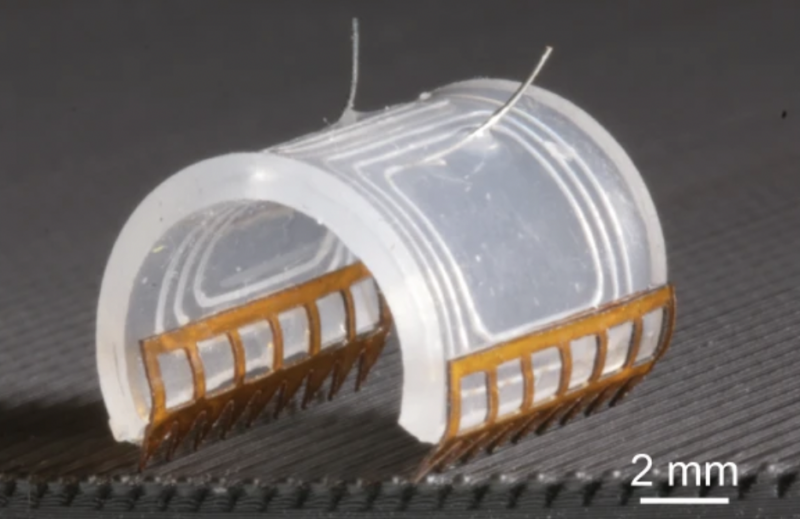Scientists at Johannes Kepler University (JKU) have created steerable soft robots that are capable of running, swimming, and jumping at high speeds. During testing, the robots achieved a speed of 70 BL/s (body lengths per second). These results are striking because even a cheetah (the fastest land animal on Earth) can only run up to 23 BL/s. But don’t expect absolute speed records, as the robots have millimeter-scale bodies—although these tiny machines are probably the fastest soft robots on the planet.
Soft robots are different from the conventional robots you see in factories, restaurants, and science exhibitions. They are constructed using flexible materials like polymers and shape-memory alloys (these alloys change their form with a change in temperature). Soft materials allow the robots to function in a similar way to that of a living organism (or a living tissue). By contrast, conventional robots are made from rigid materials like plastic, aluminum, and metal.
For a long time, scientists have been trying to create soft robots fast enough to work in extreme environments where no other machines would function. Such robots could play an important role in the medical field. For instance, ultrafast robots might replace invasive methods like a colonoscopy. Doctors could use fast soft robots to check for any anomalies in body organs (like the stomach) that are difficult to examine with conventional diagnostic robots.
Building ultrafast robots
The ultrafast robots are made using a liquid metal alloy called galinstan. It is composed of tin (Sn), gallium (Ga), and indium (In). Galinstan is not commonly used to create soft robots; they are mostly made from silicone-based elastomers. When asked about the reason behind this, the first author of the study and soft matter physicist at JKU, Dr. Guoyong Mao, told Ars Technica, “The most important property of this material is that it is liquid-like at room temperature, whilst also having high conductivity, making it useful for building soft and deformable coils.”
The researchers employed liquid metal 3D-printing technology to form the galinstan coils. These 3D-printed coils were then embedded in elastomeric shells that hold them together with an actuator that controls their state. This produces a coil-shaped soft electromagnetic robot (SEMR) capable of delivering fast actuation and propulsion. The researchers further equip the robots with L-shaped or sawtooth-shaped feet based on the substrates they’ll be moving across.
The SEMRs are powered using lithium-polymer batteries, and their ultrafast motion is driven by electromagnetic actuators (components that turn electrical energy into mechanical energy). The actuators are magnetically responsive components and therefore, the fast-moving robots can be easily controlled using a static magnetic field. During the tests, the tethered robots could move at 35 BL/s on a plane and 70 BL/s on a folded 3D surface. Moreover, they swam at 4.8 BL/s when tested in water. “We think this is a new and promising technology in the field of robotics that has great potential in the future. We weren’t able to find any similar technology, utilizing a soft functional material, that can do so many tasks at such a high speed,” said Mao.
Future of ultrafast soft robots
The researchers also conducted speed tests with prototype untethered soft robots and achieved a swimming speed of 1.8 body lengths per second (BL/s) and a maximum running speed of 2.1 BL/s. The researchers are now planning to improve the efficiency and performance of the untethered robots.
Mao and his team also say that developing more millimeter-scale SERMs using liquid 3D printing could pave the way for bigger, ultrafast robots in the future.
There exist various kinds of soft robots; some could help us remove plastic waste from the oceans, and others could allow us to study the hot lunar and Martian deserts. Speed is a big limiting factor for all such soft machines. The technology behind the ultrafast SEMRs has the potential to tackle that limit.
Nature Communications, 2022. DOI: 10.1038/s41467-022-32123-4 (About DOIs)
Rupendra Brahambhatt is an experienced journalist and filmmaker. He covers science and culture news, and for the last five years, he has been actively working with some of the most innovative news agencies, magazines, and media brands operating in different parts of the globe.



3175x175(CURRENT).thumb.jpg.b05acc060982b36f5891ba728e6d953c.jpg)

Recommended Comments
There are no comments to display.
Join the conversation
You can post now and register later. If you have an account, sign in now to post with your account.
Note: Your post will require moderator approval before it will be visible.